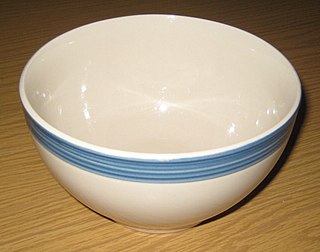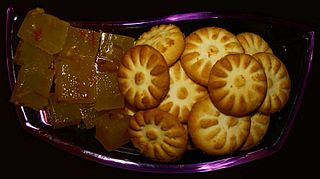
Tongs are a type of tool used to grip and lift objects instead of holding them directly with hands. There are many forms of tongs adapted to their specific use. Some are merely large pincers or nippers, but most fall into these few classes:
- Tongs that have long arms terminating in small flat circular ends of tongs and are pivoted at a joint close to the handle used to handle delicate objects. Common fire-tongs, used for picking up pieces of coal and placing them on a fire without burning fingers or getting them dirty are of this type. Tongs for grilling, tongs for serving salad or spaghetti are kitchen utensil of the same type. They provide a way to move, rotate and turn the food with delicate precision, or fetch a full serving in one grab.
- Tongs consisting of a single band of metal bent round one or two bands joined at the head by a spring, as in sugar-tongs, asparagus-tongs and the like.
- Tongs in which the pivot or joint is placed close to the gripping ends are used to handle hard and heavy objects. Driller's round tongs, blacksmith's tongs or crucible tongs are of this type.

The Mildenhall Treasure is a large hoard of 34 masterpieces of Roman silver tableware from the 4th century AD, and by far the most valuable Roman objects artistically and by weight of bullion in Britain. It was found at West Row, near Mildenhall, Suffolk, in the year 1942. It consists of over thirty items and includes the Great Dish weighing over 8kg alone.
A soup spoon is a type of spoon with a large or rounded bowl, used for consuming soup. The term can either refer to the British soup spoon or the Chinese spoon. Round bowled soup spoons were a Victorian invention. Canteens of silver made prior to about 1900 do not have round soup spoons; a tablespoon was used. Anyone wishing to verify this has only to study the vast suite of Georgian silver in the Royal Collection which has neither modern-shaped soup spoons. In some houses they are regarded as vulgar.

Kitchenware is any tools, utensils, appliances, dishes, and cookware, that can be used in the process of food preparation, cooking or baking, or the serving of food. Kitchenware can also be used to hold or store food before or after preparation.

Tableware are the dishes or dishware used for setting a table, serving food and dining. It includes cutlery, glassware, serving dishes and other useful items for practical as well as decorative purposes. The quality, nature, variety and number of objects varies according to culture, religion, number of diners, cuisine and occasion. For example, Middle Eastern, Indian or Polynesian food culture and cuisine sometimes limits tableware to serving dishes, using bread or leaves as individual plates. Special occasions are usually reflected in higher quality tableware.

A bowl is a round dish or container typically used to prepare and serve food. The interior of a bowl is characteristically shaped like a spherical cap, with the edges and the bottom forming a seamless curve. This makes bowls especially suited for holding liquids and loose food, as the contents of the bowl are naturally concentrated in its center by the force of gravity. The exterior of a bowl is most often round, but can be of any shape, including rectangular.

A slotted spoon is a spoon implement used in food preparation. The term can be used to describe any spoon with slots, holes or other openings in the bowl of the spoon which let liquid pass through while preserving the larger solids on top. It is similar in function to a sieve; however, a ladle-sized slotted spoon is most typically used to retrieve items from a cooking liquid while preserving the liquid in the pot, while table-sized slotted spoons are often used to serve foods prepared or packaged in juices, such as canned fruit and vegetables.

Clabber is a type of soured milk. It is produced by allowing unpasteurized milk to turn sour (ferment) at a specific humidity and temperature. Over time, the milk thickens or curdles into a yogurt-like substance with a strong, sour flavor.

A ladle (dipper) is a type of spoon used for soup, stew, or other foods. Although designs vary, a typical ladle has a long handle terminating in a deep bowl, frequently with the bowl oriented at an angle to the handle to facilitate lifting liquid out of a pot or other vessel and conveying it to a bowl. Some ladles involve a point on the side of the basin to allow for finer stream when pouring the liquid; however, this can create difficulty for left handed users, as it is easier to pour towards one's self. Thus, many of these ladles feature such pinches on both sides.

A salt spoon is a miniature utensil used with an open salt cellar for individual service. It is an historical and nostalgic item from a time before table salt was free-flowing, as it is today. The spoon itself ranges from 2 to 3 inches long and has a circular bowl measuring approximately 0.5 to 0.75 inches. They can be found in a wide range of materials including glass, Sterling silver, plastic, wood, ivory, bone and shell.

A kitchen utensil is a small hand held tool used for food preparation. Common kitchen tasks include cutting food items to size, heating food on an open fire or on a stove, baking, grinding, mixing, blending, and measuring; different utensils are made for each task. A general purpose utensil such as a chef's knife may be used for a variety of foods; other kitchen utensils are highly specialized and may be used only in connection with preparation of a particular type of food, such as an egg separator or an apple corer. Some specialized utensils are used when an operation is to be repeated many times, or when the cook has limited dexterity or mobility. The number of utensils in a household kitchen varies with time and the style of cooking.

Chopsticks are kitchen/eating utensils that are shaped pairs of equal-length sticks that have been used in virtually all of East Asia for over two millennia. First invented and used by the Chinese during the Zhou Dynasty, chopsticks later spread to other countries across East, South, and Southeast Asia including Japan, Korea, Vietnam, Cambodia, Laos, Nepal, Malaysia, Myanmar, Singapore, and Thailand and to a much lesser extent Philippines. Chopsticks are smoothed and frequently tapered and are commonly made of bamboo, plastic, wood, or stainless steel. They are less commonly made from titanium, gold, silver, porcelain, jade, or ivory. Chopsticks are held in the dominant hand, between the thumb and fingers, and used to pick up pieces of food.

The Chinese spoon, Chinese soup spoon, or duck spoon (散蓮華) of the type used in recent times is a spoon with a short, thick handle extending directly from a deep, flat bowl. It is a regular utensil in Chinese cuisine used for liquids, especially soups, or loose solid food. Most are made from ceramics. Although normally used as an eating utensil, larger versions of the Chinese spoon are also used as serving spoons or ladles. Some varieties have a tessellated form and most are able to be stacked on top of one another for storage.

Masghati (مسقطی) is a soft and transparent confection in Iran made with rose water, starch, sugar and water. Along with koloocheh, it is a tradition of Norooz New Year celebrations. Pistachio, saffron, and cardamom can also be used to make masghati. Masghati is produced in Fars province, particularly in Larestan county and Shiraz. The masghati which is produced in Larestan is called Masghati Lari that is more viscose and sweeter than the Shirazi one. Koloocheh and Masghati are souvenirs of Shiraz.

















